
Volkswagen T-Roc R review 2022

Introduction
Perhaps you want something a bit different for your next car – something that ticks the boxes of accommodating the whole family but leaves you with a smile.
That instantly rules out most sports cars and most basic SUVs.
But Volkswagen may have the answer. And before you say, ‘that’s too boring’, hear us out: its T-Roc has recently had its mid-life facelift.
Arguably, it didn’t need one. Its exterior already had a level of presence and personality unmatched by most other Volkswagens, with its sporty, dynamic looks and shapeliness.
Nevertheless, VW has persevered, adding a few touches to ensure the T-Roc against any hint of datedness when the current generation nears its end.
The pre-facelift model was excellent, so as long as VW hasn’t ruined it with this latest update, things look very promising.
Select's rating score* - 4 / 5
At A Glance
The front grille features three horizontal bars instead of four, with the middle one now an LED light bar running through the VW badge's centre.
It looks slightly more rounded, too, with revised headlights and a lower grille which spans the entire width of the car, tapering diagonally downwards at the sides to make room for two air intake-like sidelights.
Of course, if you want your heart to rule your head, you could go for the 'R' version, which is what we're focusing on here.
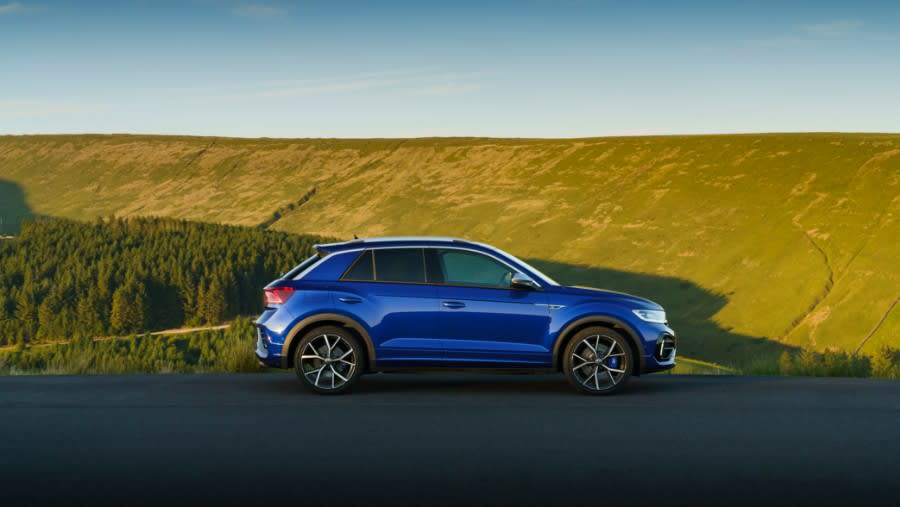
This adds even more aggression to the front end, with actual air intakes accommodated as part of a noticeably chiselled-out lower grille.
Around the sides, the wheel arches bulge slightly, merging with the chunky side skirts, which sit further out than the rest of the doors.
The rear keeps a minimalist feel, with revised tailpipes, rear vents and, on the R version, a wide gloss black panel behind the number plate and a lovely quad exhaust system.
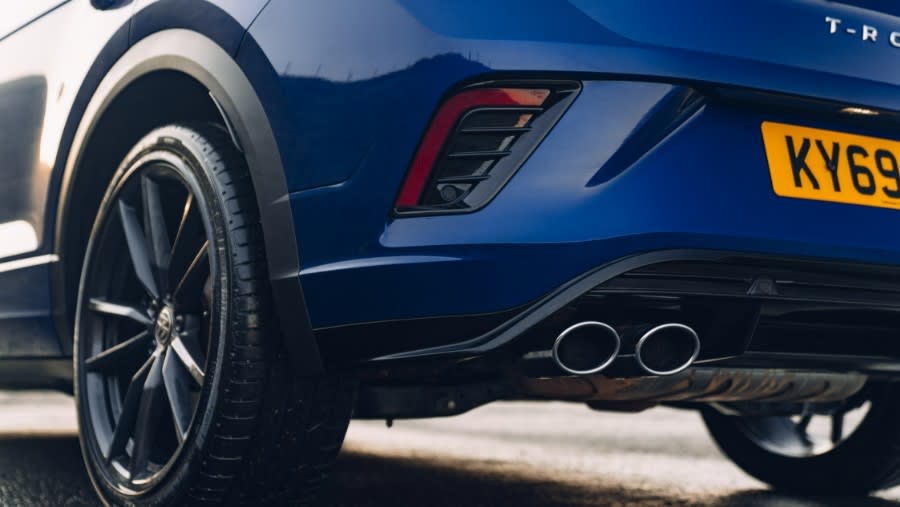
Key Features
We are interested in the T-Roc R, but first, we'll look at the rest of the range.
Entry-level Life trim gets 16-inch alloys, an eight-inch infotainment touchscreen, an eight-inch digital cockpit display, LED headlights, ambient lighting with logo projection, dual-zone climate control and black roof rails.
Next is Style, which upgrades the wheels to 17-inches and adds LED Plus headlamps, separate LED day running lights, a 10.25-inch digital cockpit display, an infotainment touchscreen with SatNav, and silver roof rails, front and rear carpets, and rear tinted glass.
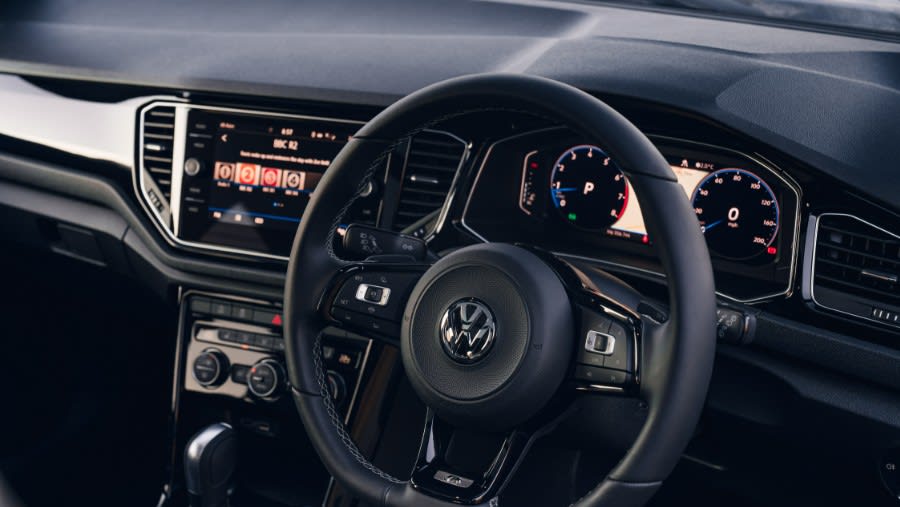
R-Line adds various selectable driving modes, heated front seats and some exterior ‘R’-inspired features.
The T-Roc R gets 18-inch alloys, aggressive front and rear bumpers, chrome quad exhausts, a leather sports steering wheel with shift paddles, silver mirrors and four-wheel drive.
There is no shortage of engine options, either.
The petrols– known as TSI – come in the form of a three-cylinder 1.0-litre 110PS or 1.5-litre 150PS engine with a six-speed manual gearbox, although the latter is available with a seven-speed DSG automatic, all with front-wheel drive.
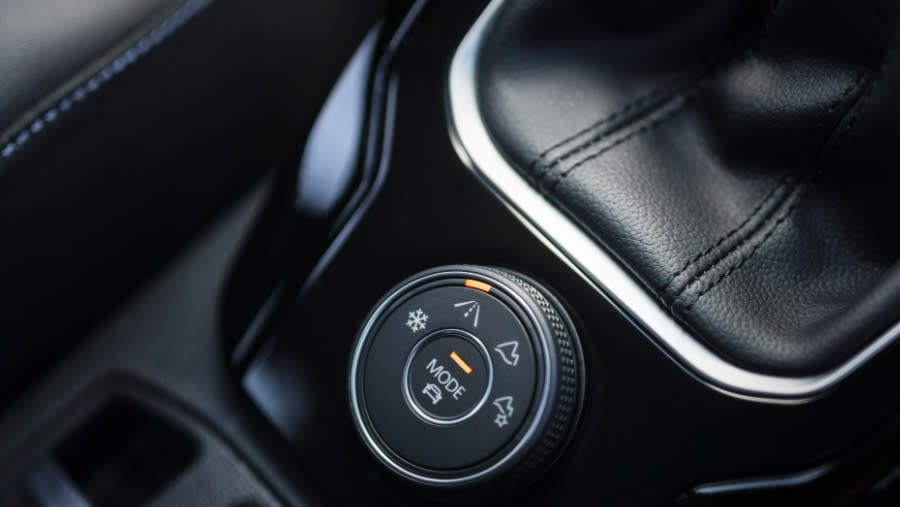
The same automatic gearbox is also available with a 2.0-litre 190PS petrol engine, which adds 4Motion all-wheel drive.
If you prefer the economy of a diesel engine – known as TDI – you can opt for a 2.0-litre with 115PS or 150PS, along with a six-speed manual and front-wheel drive.
The 150PS diesel is also available with a seven-speed automatic gearbox – and choosing this gives you the option to have the 4Motion all-wheel drive system.
Not all engines are available with all trims, and, as you'd expect, the higher-powered variants aren’t available at entry-level, while higher grades exclude lower-powered options.
Picking the T-Roc R gives you a 2.0-litre turbocharged petrol engine with a seven-speed DSG automatic, four-wheel drive and, enjoyably, 300PS.
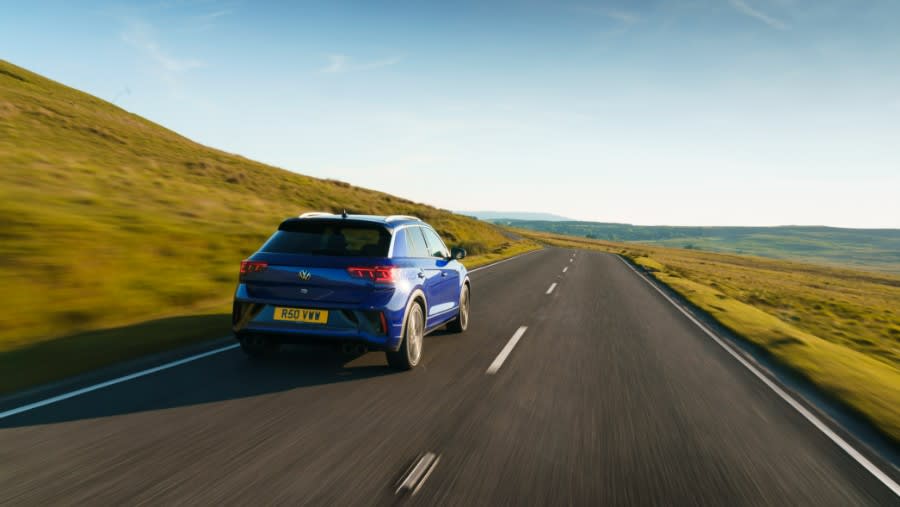
Performance & Drive
As you’d imagine, driving away in the T-Roc R is hair-raising and feels naughty and mischievous in a typically family-friendly VW. A bit like a 50-something dad dancing gleefully to 2020s pop music, but without the embarrassment that comes with it. It indeed unlocks your inner child.
Nought to 62mph is over and done with in 4.9-seconds when using the launch control (yes, it has that), and it powers away well without a hint of a problem.
There is a great deal of power available across the rev range. Although flooring it is met with a slight delay in terms of power delivery, it makes for effortless driving at all speeds, and the engine delivers a pleasingly raucous tone.
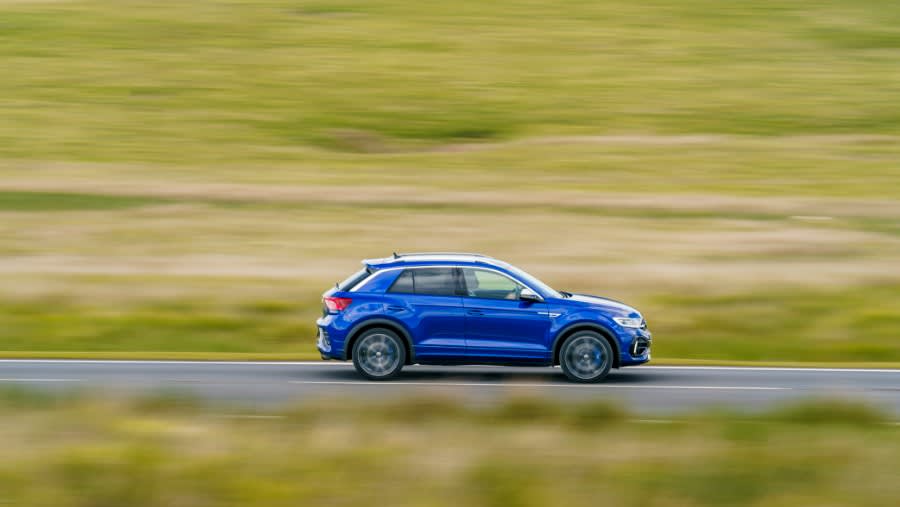
Regarding handling, the T-Roc R's excellent grip levels compliment the equally impressive steering, with the sports suspension limiting body roll impressively, given this is a small SUV with a higher centre of gravity compared with, say, a Golf.
You quickly forget you're driving an SUV if you power it around a corner, and it makes tackling twisty backroads at least fun for you, if not the whole family.
Granted, it has its limits, and if you're used to driving a Golf R, you won't be claiming the T-Roc is superior. But VW has done an awe-inspiring job.
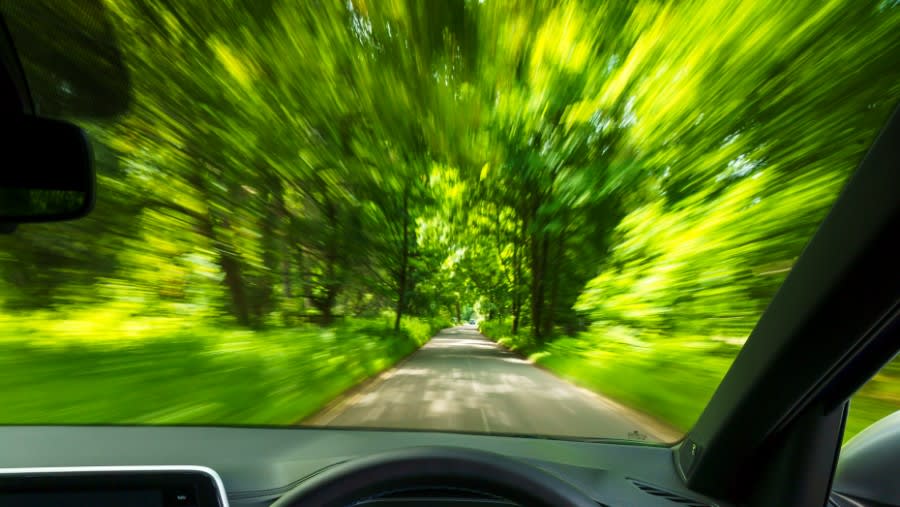
Our test car has optional Dynamic Chassis Control, with various selectable driving modes. While it’s not transformative, it helps make the R’s stiffer ride more bearable.
Sadly, it isn’t cheap, although it's certainly something to consider if you're transporting the rest of the family with you.
Our only gripe is that the larger alloys and tyres mean there's more road noise in the 'R' than the rest of the T-Roc range. But hopefully, you'll have so much of a laugh you won't even notice.
As for the rest of the range, the entry-level 1.0-litre TSI 100PS engine is, surprisingly, reasonably brisk, providing a decent pace at lower revs.
Yes, it's the smallest, lowest-powered and slowest engine in the T-Roc, but it delivers a good level of performance given its specification. And there’s no shame or embarrassment in choosing it.
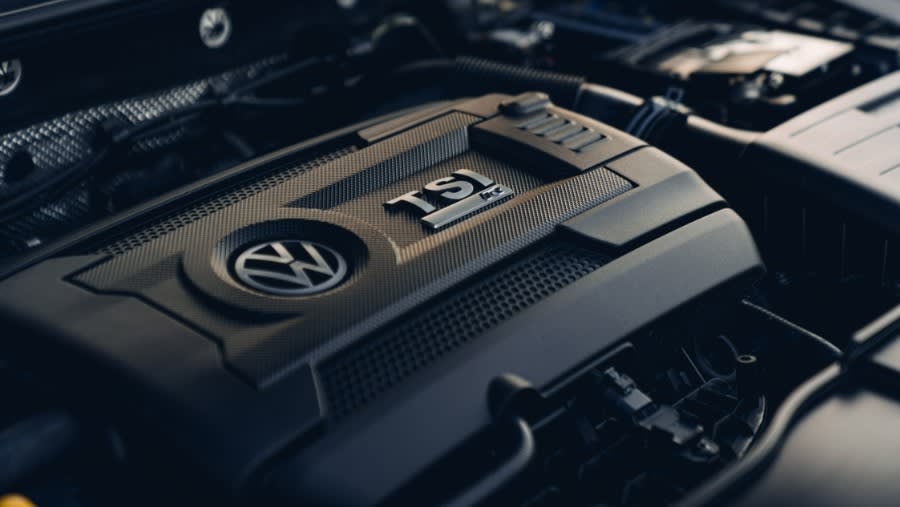
We would recommend the 1.5-litre TSI, which makes life a little bit easier, especially if you're regularly transporting lots of cargo and passengers.
The diesels also perform well, and if you're going to be travelling long distances a lot or towing trailers and caravans, these will provide the low-speed torque you’ll need to make good progress.
The Life trim comes with 16-inch alloys, which are the best for comfort. However, anything but the full-beans ‘R’ version introduces more body lean in the bends thanks to less sport-focused handling.
The R-Line is a toned-down 'R' version, but it does include sports suspension, so those favouring handling over ride comfort may find it a cheaper leasing solution.7
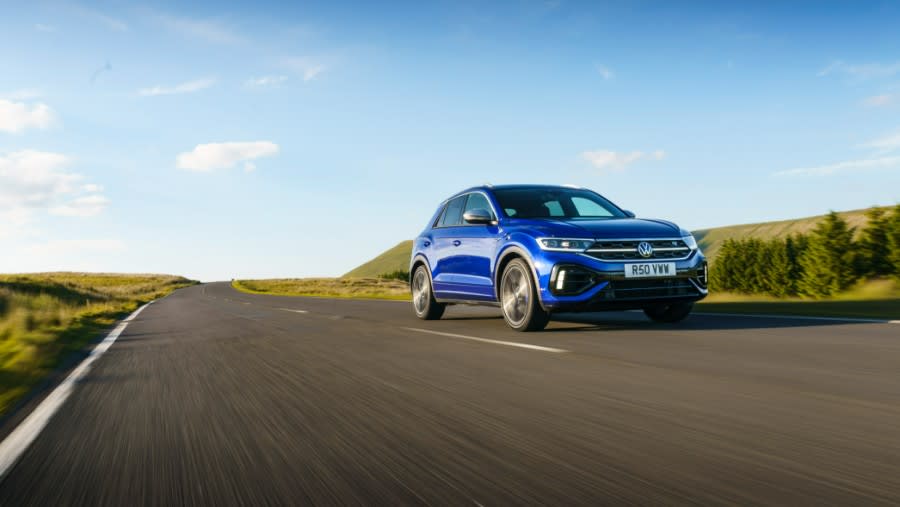
Running Costs & Emissions
Unsurprisingly, the T-Roc R’s engine is the least economical, returning 33.2mpg while producing 194g/km of CO2.
For the petrol engines, the 1.0-litre TSI manages 47.1mpg, emitting 136g/km of CO2.
Fuel economy figures are identical for the 1.5-litre TSI with the manual gearbox, which emits 135g/km of CO2. However, this increases to 138g/km of CO2 with the automatic transmission, dropping the miles-per-gallon figure slightly to 46.3mpg.
The 2.0-litre TSI, with its automatic gearbox and four-wheel drive, produces 38.2mpg and 168g/km of CO2.

As for the 2.0-litre diesels, you’ll get 60.1mpg, and 122g/km of CO2 from the 115PS variant. But the more powerful 150PS engine returns 58.9mpg with the manual gearbox, producing 125g/km of CO2.
With the automatic, this becomes 57.7mpg and 128g/km of CO2, while adding all-wheel drive returns 51.4mpg and 145g/km of CO2.
In terms of reliability, Volkswagen has all but lost its reputation as an ultra-dependable brand. However – just for your information - the T-Roc comes with one-year free breakdown cover, valid anywhere in the UK and across Europe. This won’t really impact you when you’re leasing, but it’s possibly useful to know, all the same.
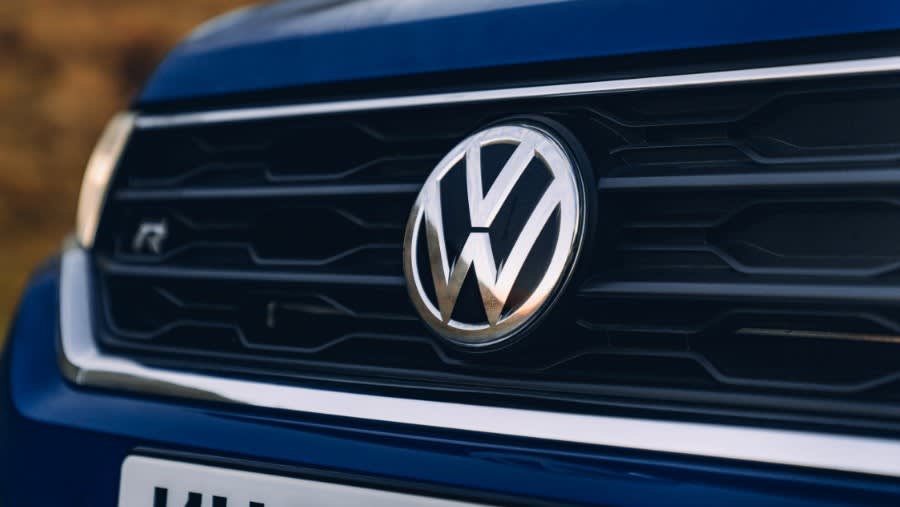
Interior & Technology
Inside the T-Roc R, you get plenty of reminders that it’s the ‘R’ version, thanks to the emblem appearing in various places - and you get body-coloured panels on the dashboard.
Hug-inducing sports seats and a comfortable-to-hold, leather-bound sports steering wheel add to the experience.
If you don’t have the R version, though, it's still a charming interior to look at, with the infotainment screen peering out over the top of the dashboard, and shiny bits of trim and gloss piano black around the gear lever.
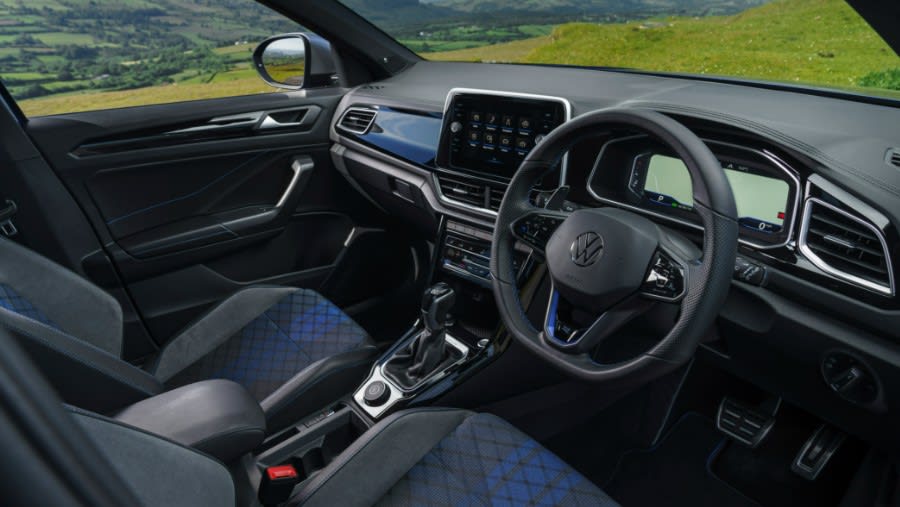
There are plenty of plush surfaces, and the build quality is improved over the pre-facelift version. However, inexpensive plastics still feature, even if they're mainly hidden from view.
The infotainment system is clear, responsive, and easy to use, thanks to an intuitive menu layout and convenient shortcut buttons. Meanwhile, voice control and a rotary dial make it simple to operate on the move.
Voice control and SatNav aren’t included on the entry-level Life trim. But you can get around that by using Google Maps on your smartphone, which pairs with the system via Apple CarPlay and Android Auto.
While it’s not a class-leading system, it’s impressive and works in harmony with the digital cockpit, which replaces physical dials behind the steering wheel.
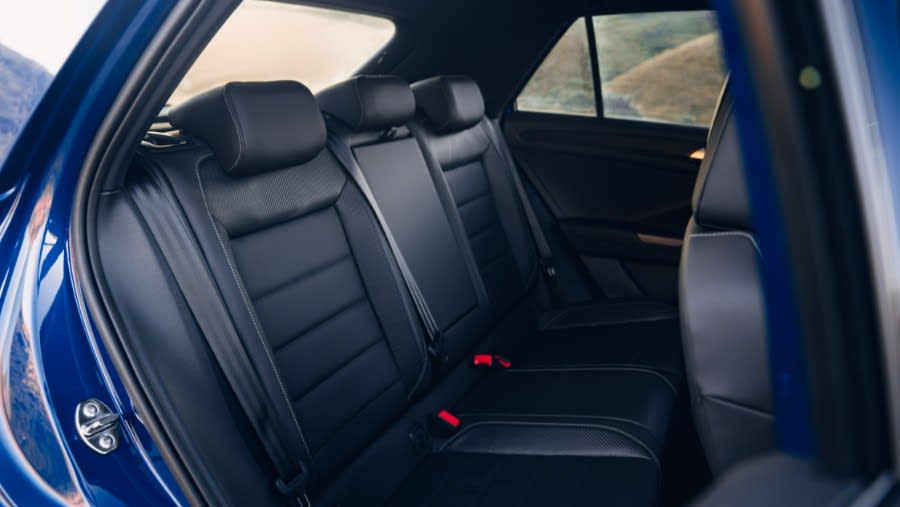
The cockpit screen is also customisable, giving you a range of options in terms of information displayed so you can prioritise what's important to you.
Overall, the quality is a step up from before, and, especially in the 'R' version, the interior will be tempting you to part with your cash.
It is not on a par with the likes of Audi, but considering VW generally sits beneath the premium brands, it’s easily hit the nail on the head with this revised interior.
Practicality & Boot Space
Finding a comfortable driving position is easy in the T-Roc R, with the sports seats cocooning your body, helped by the adjustable lumbar support, which is included on all models, including the entry-level Life trim.
There is a bunch of adjustment in the VW's seats and steering wheel, too, although there's no option for electric adjustment, so we have to make do with levers.
You sit perched up, so a reasonably high driving position helps with forward visibility, but the front pillars aren’t the thinnest.
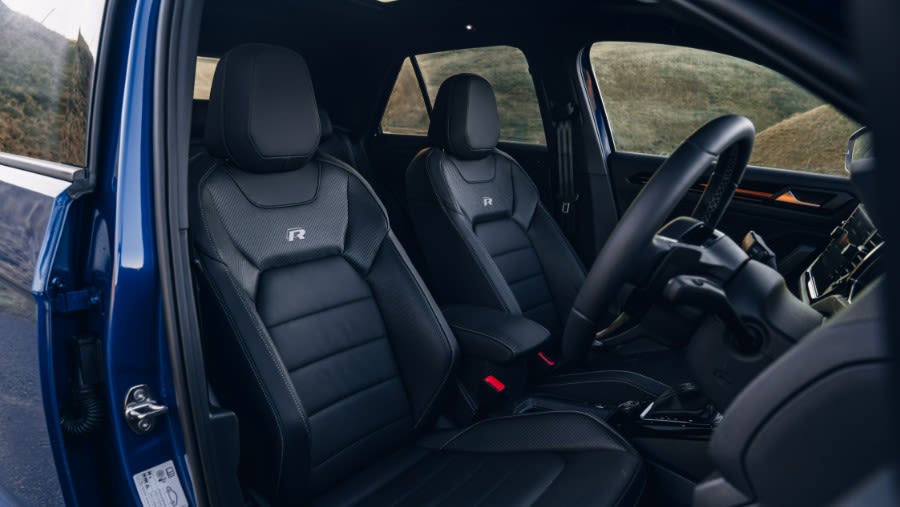
The rear faces more restrictions, as the T-Roc has a sloping roofline, which means the back pillar is thicker due to its angle. Still, a rear-view camera can be added as an optional extra, while front and rear parking sensors are included on all models as standard.
In terms of space, there's plenty of legroom and headroom on offer, so even taller drivers won't feel short-changed. But a combination of a tall driver and lofty rear-seat passenger will leave the back a little too short on room for your knees.
Unfortunately, the rear bench can't recline or slide forwards and backwards. So, unless those in the front don't mind moving their seats forward, you're stuck with the amount of space you're given, although at least the car is relatively wide.
Thankfully, storage space is generous, with decent-sized door bins and capacious cubbies, including in the centre console and there’s a couple of cupholders in the front.
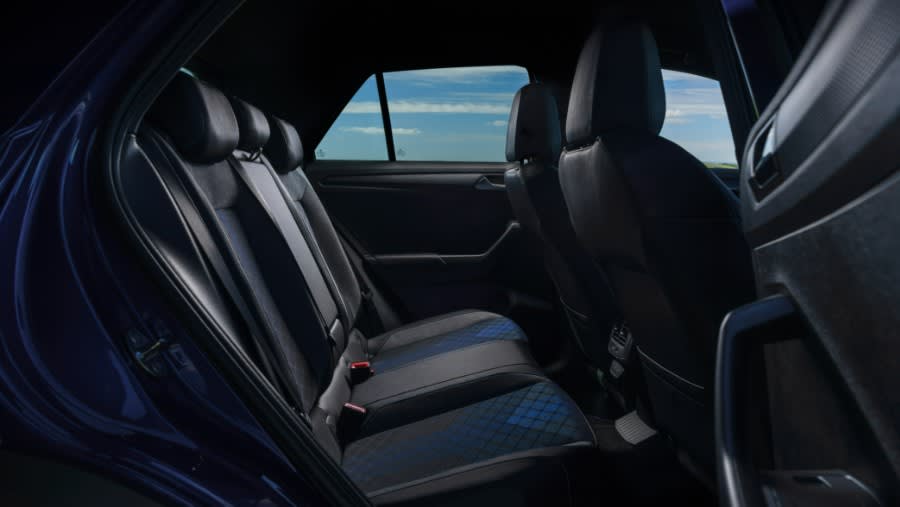
Boot space is smaller in the all-wheel drive versions because the rear has more technical wizardry to accommodate beneath the boot floor, so it measures 392 litres in the T-Roc R.
This expands to 1,237 litres with the rear seats folded down in a 60/40 split, although some rivals offer a more versatile 40/20/40 configuration, which isn't available on the T-Roc.
Front-wheel drive versions get a more generous 445-litres, extending to 1,532 litres, while the boot floor is height adjustable, enabling you to get rid of the boot lip if you need to slide larger objects in.
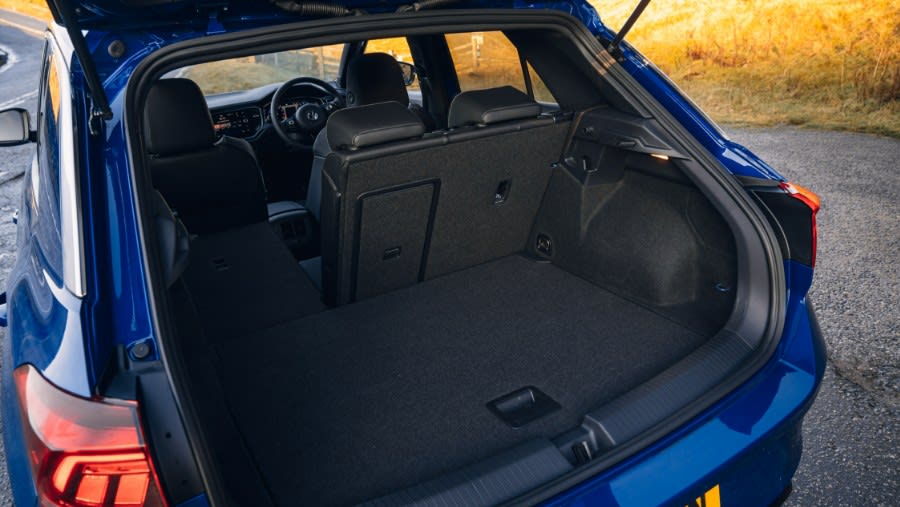
Safety
The Volkswagen T-Roc was put through its paces by Euro NCAP back in 2017 and was awarded a five-star rating.
It scored 96 per cent for adult occupants, 87 per cent for children and 71 per cent for safety assists.
There are plenty of driver assistance systems included throughout the range. All T-Rocs get automatic emergency braking, lane-keeping assist, adaptive cruise control, automatic high beam, park assist and electronic stability control. You also get traction control, driver fatigue detection, auto-hold parking brake, hill start assist and a front camera.
Style trim and above adds dynamic road sign display, while the T-Roc R gets hill descent control, too.
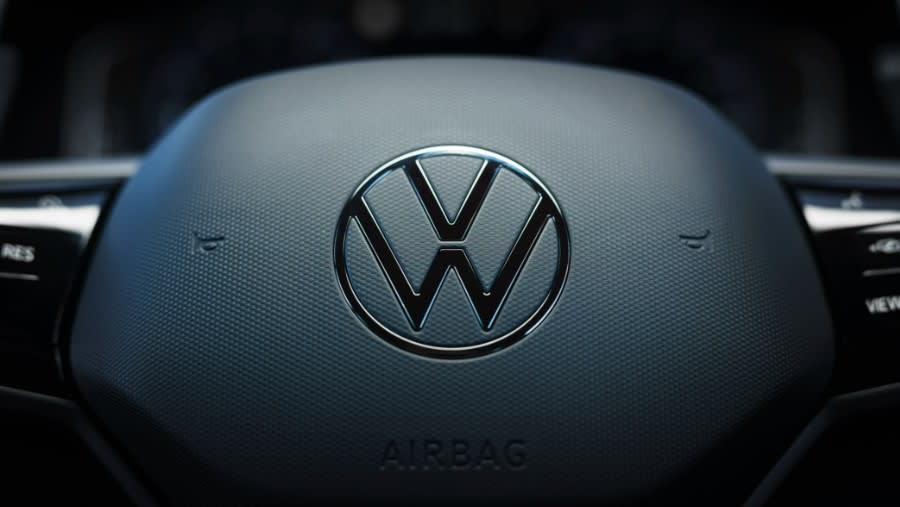
Options
The default colour on the T-Roc is 'Ascot Grey', which has some beige undertones.
A few hundred quid extra will get you a contrasting black roof, while you can also choose pure white, with or without the black top, if you wish.
Black Pearl is also available, while all other colours – dark grey, red, grey-blue, silver, and blue – are obtainable with or without a black roof.
Some variations in the hues are available on each trim – and it's actually more limited on the top-of-the-range R version.
Style and R-Line trims get a choice of interior designs, while each grade’s wheel size can be upgraded by one inch if you prefer larger wheels, meaning those who want the performance look can get 19-inch alloys on their T-Roc R.
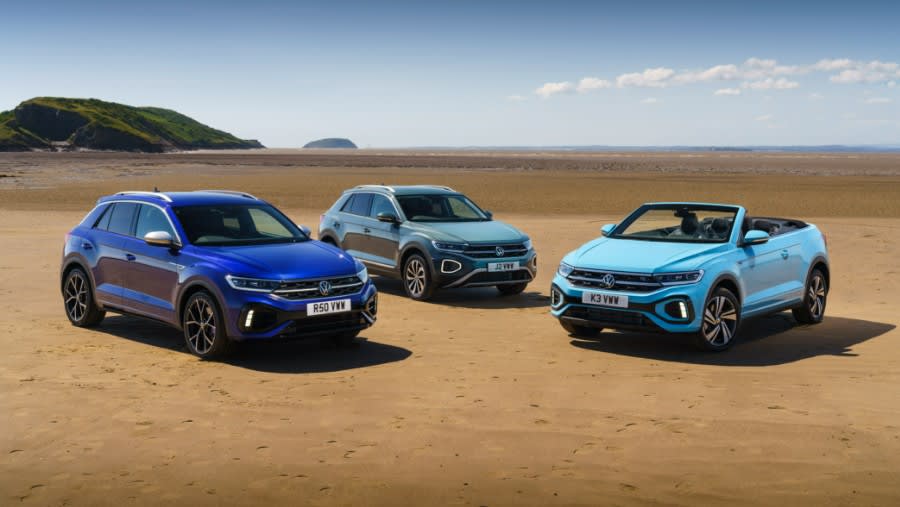
Life trim is the only one with a smaller eight-inch digital cockpit, but the larger 10.25-inch version can be added as an option.
There are numerous other extras, including a Winter Pack, which provides heated front seats, Keyless Access, a rear-view camera and rear tinted glass. You also get internet capability, a wireless phone charger, a heated steering wheel, a space-saver spare wheel, and numerous accessories.
R-Line and R versions can get the Dynamic Chassis Control, which costs just into four figures, while leather seats, dashboard decor and seat upgrades are also available.
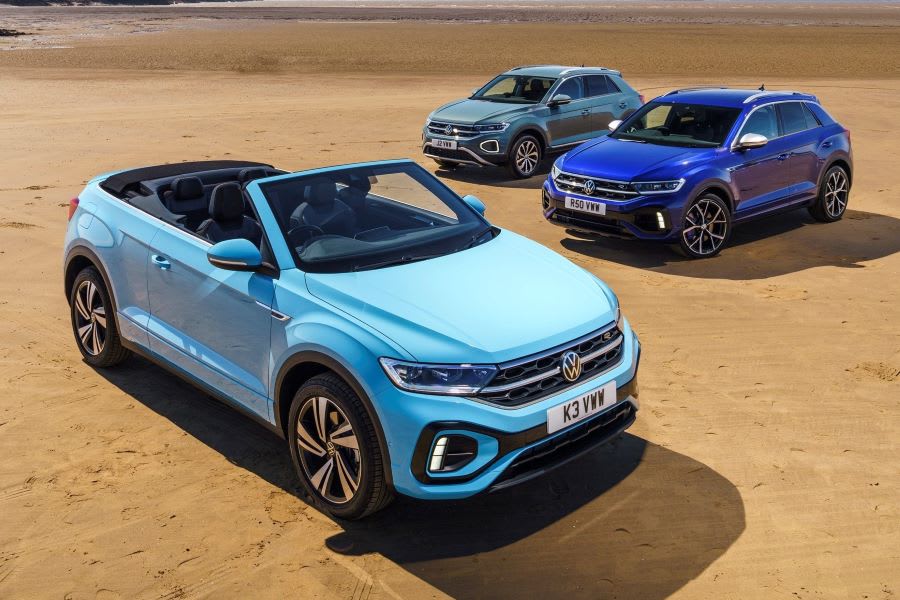
Rival Cars
The Volkswagen T-Roc is in a crowded marketplace, especially at entry level, with the Seat Arona and Ford Puma among the leading contenders competing for your attention.
The Puma is excellent, but although it's cheaper, you get a lot of extra kit for your money with the VW.
However, the T-Roc R changes the complexion, priced similarly to other sports SUVs such as Cupra’s Formentor and Ateca, plus Audi’s SQ2, all of which share the T-Roc’s underpinnings as sister brands.
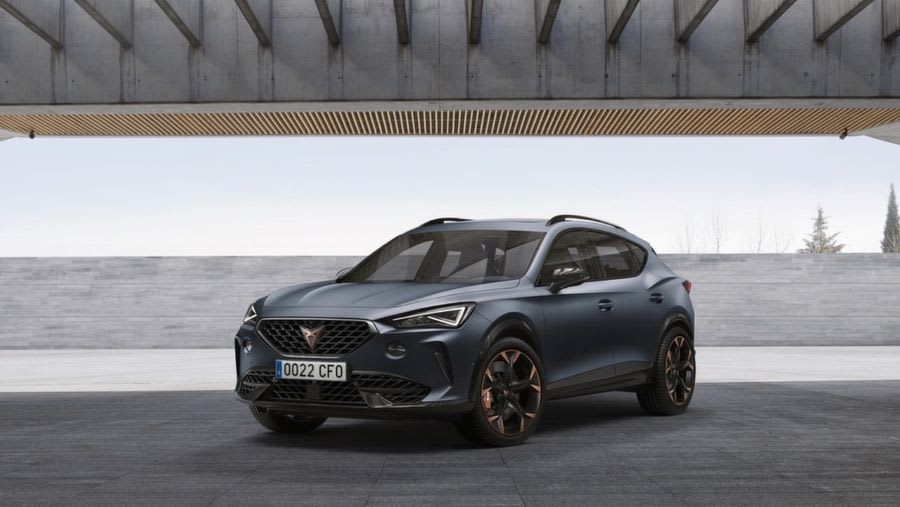
The Peugeot 3008 isn't a performance SUV but offers a hybrid version with 300PS.
Of course, the standard Audi Q2 is worth considering, but the T-Roc has marginally more boot space in the front-wheel drive variants.
A Citroen C3 Aircross, Kia Stonic, Peugeot 2008 and Skoda Kamiq are good leasing alternatives.
If you're feeling flush with cash, a Mini Countryman and the Volvo XC40 are also worth adding to your lease car shortlist.
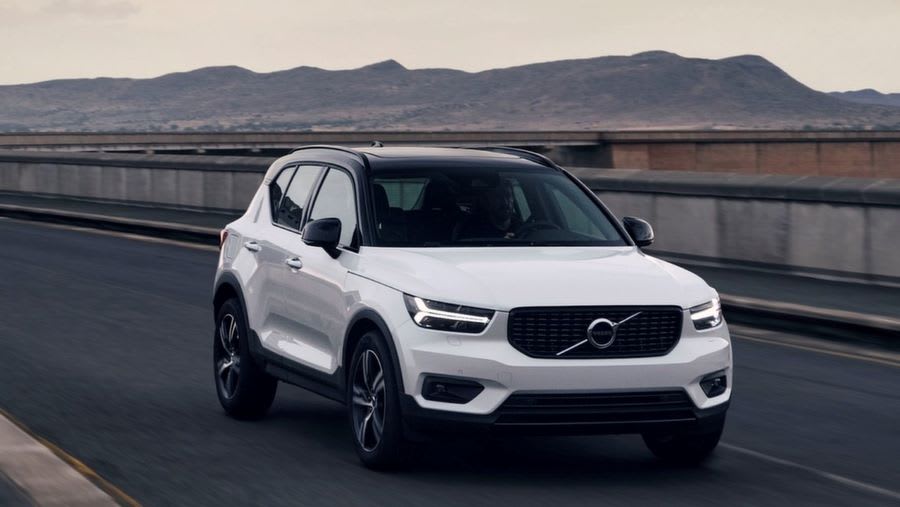
Verdict & Next Steps
The Volkswagen T-Roc is an excellent all-rounder, although its personality depends on which variant you lease.
Standard versions are comfortable and well-refined, while the T-Roc R provides excellent performance and handling for those who want to push limits.
Those who need extra boot space should avoid the all-wheel drive versions, which have lower capacity – including the R version.
For most, entry-level Life trim will suffice as it's well-equipped. And, if you're worried about missing out, the larger digital cockpit screen can be added as an extra, which we'd seriously consider doing.
If money is a factor, the 1.0-litre TSI engine is capable, although we’d go for the 1.5 TSI, given it's just as economical. Or consider one of the diesels to lower running costs further.
Our inner child loves the T-Roc R, though – it's a great laugh.
The head says, 'get the Life trim'. The heart says, 'get the R'.
Both serve very contrasting purposes excellently – and, outside of the premium brands, there are few cars on the road that we can say that about.
Where to next?
View our latest Volkswagen T-Roc R Leasing Deals - from just £354.35 per month inc VAT**
Looking for a great leasing deal? Check out our incredible range of Special Offers
New small SUV? Read our latest Car Reviews and find the right model for you
Want to know more about leasing? Take a look at our comprehensive Leasing Guides
Interested in everything motoring? Why not catch up on all the latest Car Leasing News.
*Score based on Select’s unique meta score analysis, taking into account the UK’s top five leading independent car website reviews of the Volkswagen T-Roc R
**Correct as of 16/11/2022. Based on 9 months initial payment, 5,000 miles over a 48 month lease. Initial payment equivalent to 9 monthly payments or £3,189.15 Ts and Cs apply. Credit is subject to status.






















